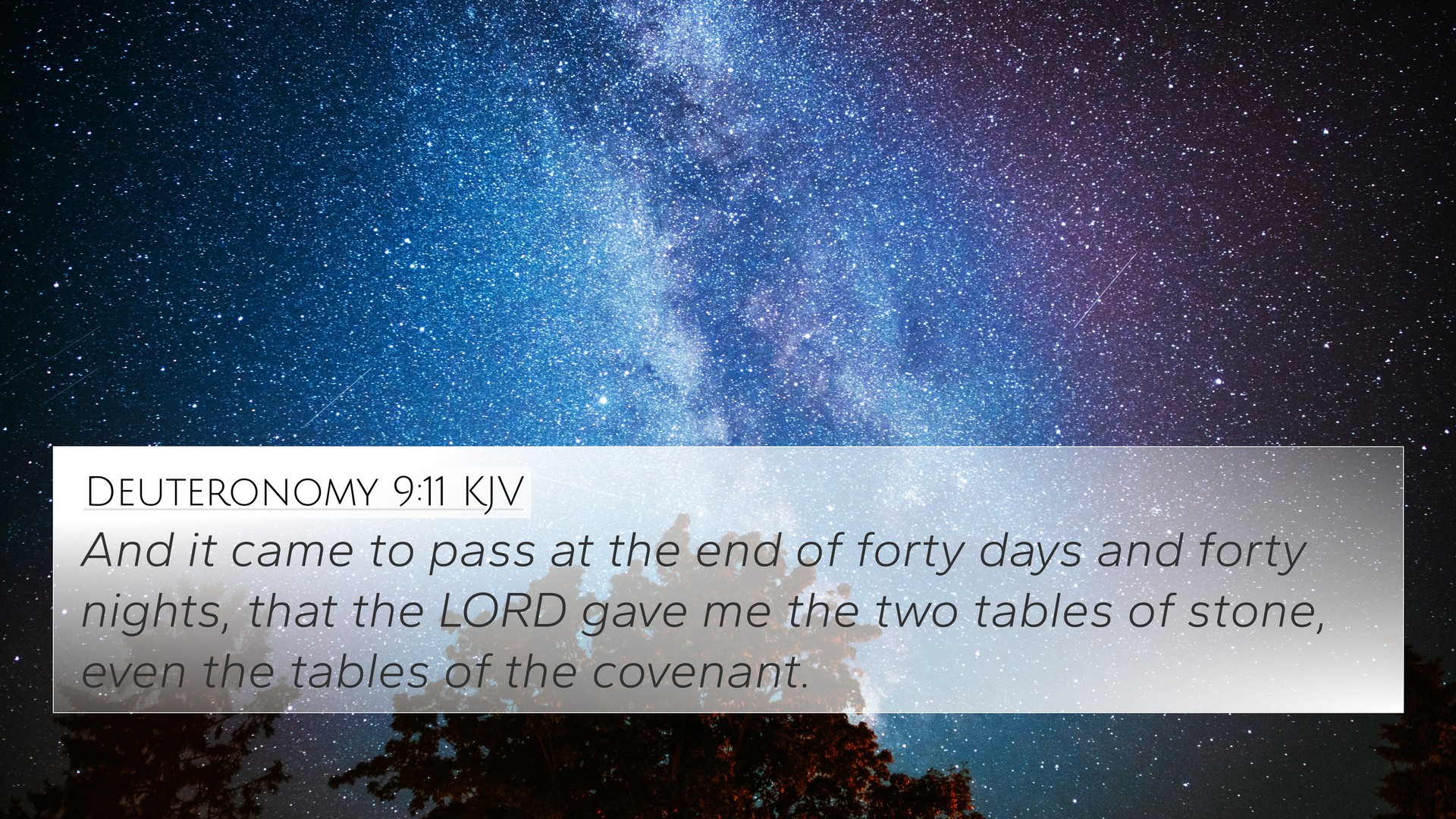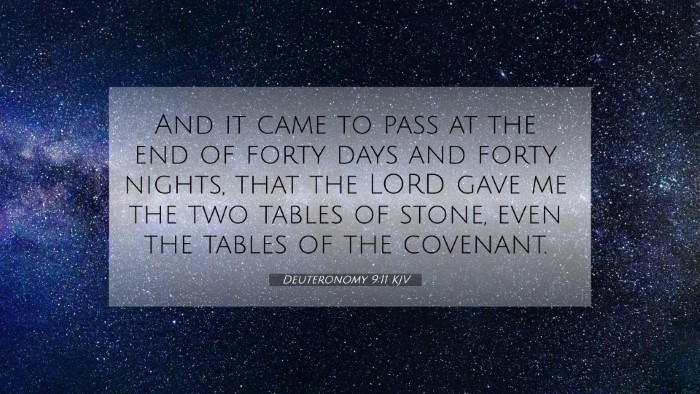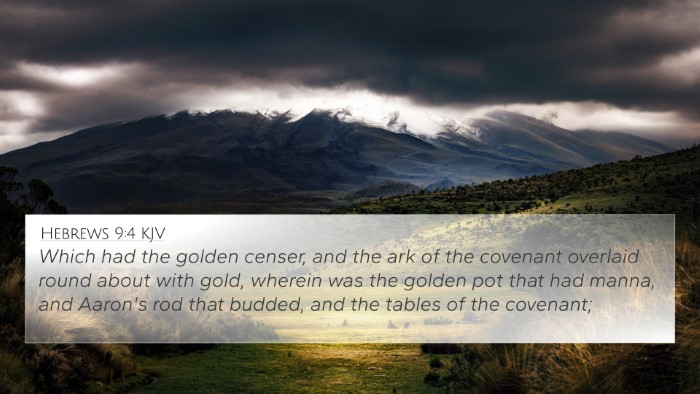Understanding Deuteronomy 9:11
Deuteronomy 9:11 states:
"And it came to pass, at the end of forty days and forty nights, that the Lord gave me the two tables of stone, even the tables of the covenant."
This verse marks a significant moment in the narrative of Israel's journey and their relationship with God. It highlights the giving of the Law, which is central to the covenant between God and His people.
Meaning and Interpretation
The following outlines the meaning of Deuteronomy 9:11, synthesizing insights from respected public domain commentaries:
-
Divine Revelation: According to Matthew Henry, this verse illustrates the divine nature of the Law. The tablets of stone symbolize God's authoritative word being inscribed, representing His moral and ceremonial expectations from His people.
-
Covenantal Significance: Albert Barnes elaborates that the giving of the tablets is pivotal in the context of God's covenant. This act signifies God's commitment to His people, and conversely, their responsibility to adhere to His commandments.
-
Temporal Context: Adam Clarke emphasizes the timeframe of "forty days and forty nights," paralleling the periods of trial and testing in Biblical history, representing both God's judgment and mercy.
-
The Role of Moses: The verse indicates Moses as a mediator between God and Israel, a theme that reverberates throughout the Pentateuch. Both Henry and Barnes reinforce that Moses' leadership is critical in conveying God's instructions to his people.
-
The Two Tablets: Commentaries often discuss the significance of the two tablets representing the dual aspects of the law—vertical (relationship with God) and horizontal (relationship with others). This principle finds resonance in New Testament teachings as well.
Cross-References for Deuteronomy 9:11
This verse is interconnected with several other scriptures that enrich its understanding:
- Exodus 31:18: Similar account of the tablets being given to Moses on Sinai.
- Deuteronomy 4:13: Discusses the covenant and the laws inscribed on the tablets.
- Exodus 32:15-16: Records Moses descending from Sinai with the tablets, emphasizing their importance.
- Exodus 20:1-17: Deliverance of the Ten Commandments, which God spoke and Moses subsequently recorded.
- Hebrews 8:6: A New Testament reflection on the better covenant established through Christ, linking it to the covenant given in Deuteronomy.
- Romans 3:20: Highlights the purpose of the law, stating that it brings knowledge of sin.
- 2 Corinthians 3:3: Paul contrasts the letter of the law (tablets of stone) with the spirit, underlying the transformation through Christ.
Thematic Connections
Deuteronomy 9:11 reveals broader themes throughout Scripture, making it a pivotal verse for inter-Biblical dialogue. The themes of covenant, law, and mediation resonate across various biblical texts, allowing for both thematic Bible verse connections and cross-referencing biblical texts.
Tools for Bible Cross-Referencing
For those delving deeper into the connections between Bible verses, utilizing Bible concordance or a Bible cross-reference guide can enhance understanding. Various resources are available to aid in identifying these connections. Consider using:
- Comprehensive Bible cross-reference materials to explore themes and sentiments across different parts of Scripture.
- Cross-reference Bible study methods to facilitate comparative analysis of contrasting or complementary verses.
- Bible reference resources to enrich sermon preparation and personal study.
Conclusion
In summary, Deuteronomy 9:11 serves as a crucial link in understanding the nature of the Hebrew covenant and God's law. Through the exploration of this verse and its connections to other Scriptures, believers can appreciate the continuity of God's message and His desire for a covenantal relationship with humanity.






